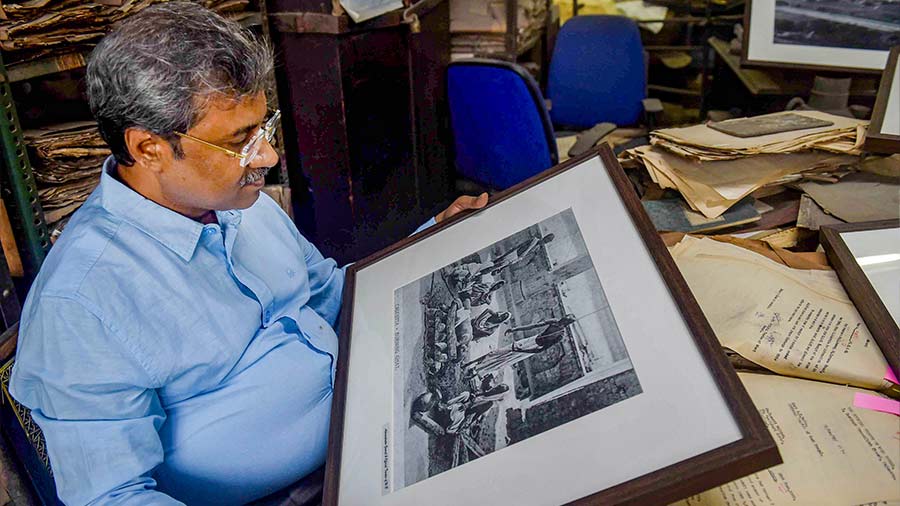Tucked away in a storeroom in the labyrinth-like corridors of a Secretariat building in Kolkata is a treasure trove of rare photographs, sketches, mementos and documents whose discovery has turned the neglected room into an antiquarian’s ‘Aladdin's cave’.
Among the treasures are black-and-white photographs of a steam-driven three-decker tram on the roads of the second city of the British Raj and the pontoon bridge that preceded the iconic Howrah bridge over the Hooghly; a certificate issued to Paul Gregory Melitus, the 1880 topper of the coveted ICS examination from Bengal Presidency; an ivory replica of the Holwell monument; and a book on public hygiene written by an Indian doctor during the outbreak of the Spanish flu in 1919.
These photographs and documents are now being carefully restored by the office of the Administrator General and Official Trustee of West Bengal. Way back in 1849, a British-era law created an office for looking after the property and effects of any citizen who dies without any heir or next of kin.
Most people whose properties came under the administrator's charge were Britons who had died while working or doing business in West Bengal. The law remains in effect with some amendments brought in 1902 and 1913 and has created a huge depository of personal belongings. These may prove to be a collection of remarkable value for both antiquarians and historians looking to flesh out their understanding of social life in the 19th and early 20th centuries.
Biplab Roy, the current administrator general who has been working hard to preserve this unique treasure, told PTI, “Once we stumbled across these objects in the storeroom, our next line of action was dusting and cleaning.”
“We then started cataloguing and documentation. Restoration is being done systematically, but the sheer number and variety of such photos, letters and documents is overwhelming,” he said.
The work undertaken by Roy and his team is quite enormous. Thousands of sepia-tinted photographs, mostly taken by Britishers along with tonnes of documents and artefacts stashed away in leather folios and trunks are being taken up for restoration work.
Around 1,000 photos have already been restored and are now in safe custody of the department, Roy said.
The administrator general pointed to a book titled ‘Hygiene and Public Health’ by Dr Jahar Lal Das, published in 1919, during the Spanish flu outbreak. The author had suggested wearing masks and listed ways to prepare a mask in the manual.
There are photos of the river ghats along the Hooghly, small ships, New Market and Great Eastern Hotel in the 19th century as well as private albums of many British army officers. Firearms from the 19th century along with ammunition have also been found hidden in the room.
"We want to set up a museum in our building storing all these objects after they are fully restored. We also want to introduce a digital touchscreen where a visitor can see the images by the touch of a screen,” Roy said.
